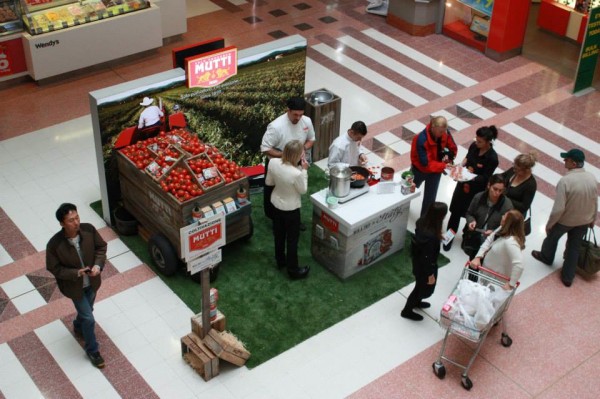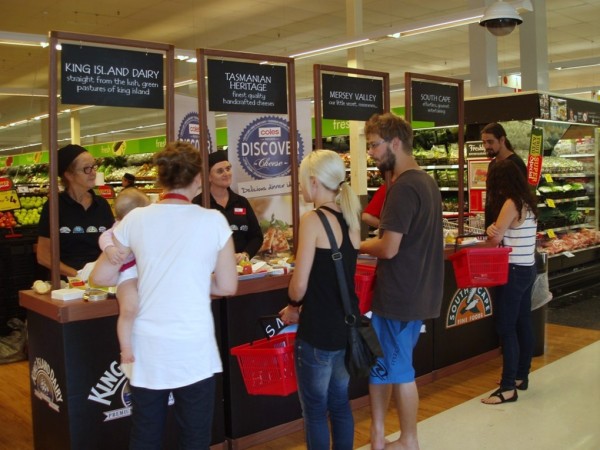 Store-in-store farmers markets and pop up shops selling bespoke ice creams are just some of the retail concepts being implemented in Australia by innovative consumer brands.
Store-in-store farmers markets and pop up shops selling bespoke ice creams are just some of the retail concepts being implemented in Australia by innovative consumer brands.
Store concepts are mostly implemented by retailers, however, that’s changing as manufacturers increasingly target shoppers directly in the bricks and mortar space.
“Their objectives may be different,” says Norrelle Goldring, head of shopper insight and retail strategy at global research datahouse, GfK.
“For some it’s about providing a flagship experience. For others it’s about understanding their shoppers better,” she says, adding that “obviously this concept isn’t new”.
“Sony had its concept stores 5 years ago. Nestle had one at Darling Harbour way back in the mid 1990s and naturally Apple is the big retail success story.” What is new and exciting, however, is that many traditional supermarket manufacturers are jumping onto this trend in 2013, notably Magnums, King Island Dairy, and Mutti.
Grocery brands popping up Magnums, a Unilever-owned ice cream traditionally sold as a wholesale brand, is one brand that has cut out the retailer by opening a six week Australian pop up store in July.
The Magnum Pleasure Store, which has already been rolled out in cities such as Paris and Amsterdam, allows shoppers to create their own personalised ice creams at a dipping bar. Using a bare Magnum, customers select a white, milk, or dark chocolate coating, before choosing four of 18 different toppings, such as rose petals or popping candy, for $7.
The result is enough to make most shopper’s mouths water in anticipation, and has created significant brand buzz for the ice cream in Australia. It also cleverly marketed Magnum – a product usually associated with convenience stores and supermarkets – as a luxury item by setting up shop in upmarket Westfield Sydney.
Over in the canned grocery goods space, the Australian wing of global FMCG brand, Mutti, used a similar retail concept to target new shoppers this year. Developed by Sydney agency, New Republique, the campaign aimed to tell shoppers that Mutti’s tomato-based range could be bought in Coles supermarkets for the first time. “Mutti is taking on a market dominated by a cheaper private label offering,” says Nima Yassini, founder of New Republique.
Central to the Mutti campaign was the installation of several immersive pop up outlets in Westfield centres, which offered cooking demonstrations and taste testing. This was implemented alongside other below the line campaigns, such as a prize trip for two to Italy that was promoted in Coles’ supermarket aisles.
“This campaign challenges entrenched brands and our 360 approach is creating new and appreciative Mutti tomato fanatics,” says Yassini. Engaging instore concepts While Magnum and Mutti are examples of consumer brands encroaching into the pop up space, others are pushing boundaries by installing concepts directly inside supermarkets.
One best practice example of this was recently implemented for cheese manufacturers, such as King Island Dairy, South Cape, and Tasmanian Heritage, in select Australian supermarkets.
This fun campaign worked by letting supermarket shoppers sample different cheese varieties at a large stand inspired by produce markets.
Gingkai Tan, MD of Retail Safari, which created this “Farmers Market” concept, said the campaign was about helping shoppers “relax, learn, taste, and purchase” different products.
“Shoppers [were given] greater confidence and knowledge in purchasing specialty cheeses, creating an environment of education on the versatility of these products at a local level.”
“The program was a huge success in store, with hundreds of thousands of local shoppers converted to consumers and even advocates of specialty cheeses.”
Tan says there’s still barriers preventing Australian consumer brands from implementing innovative concepts like this, including the perceived costs of instore implementation.
“There is a view that moving beyond the single market or single solution approach is not cost efficient,” he says.
“[Despite this] the cumulative returns from optimising community penetration in multiple markets can deliver greater return on investment than a scatter gun approach.
“The reality is that in today’s retail environment the relationship with brands takes place at the local level and needs to be implemented and managed locally.
“It’s about getting the balance, and the execution, right.”







